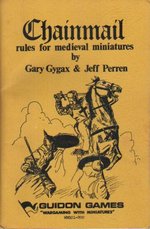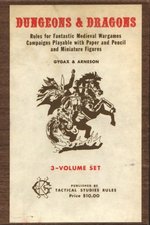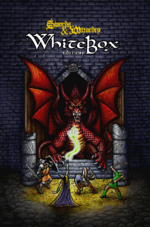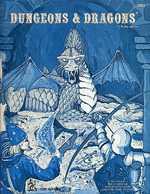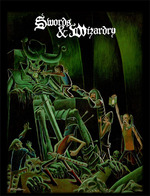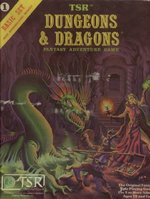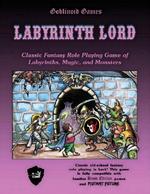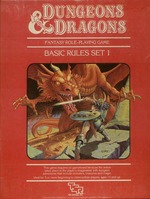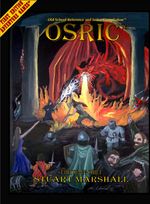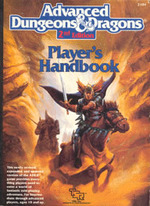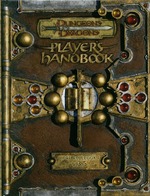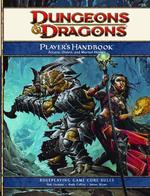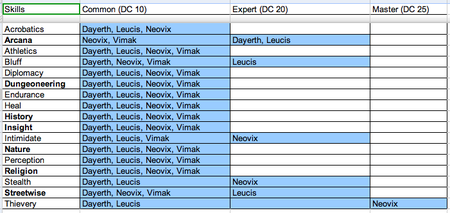One of my biggest disappointments in 4th Edition was the Adventurer's Kit, that pretty much every character is issued as soon as they come out of the character builder, like recruits getting their gear in Basic Training.
This kit includes: a backpack, a bedroll, flint and steel, a belt pouch, two sunrods, ten days’ worth of trail rations, 50 feet of hempen rope, and a waterskin.
I can see the reasoning for this- why make new players pick out gear that they will need- why not make a handy kit with all the basics covered, and then give them a supplemental list to pick up some flasks of oil or such of they have the left over cash.
But that feels totally modern and artificial- Is there a REI type store in every town and village that puts together these kits for any adventurers who happen by?
In any case, something I have never really understood were the rations/iron rations/trail rations.
The iron ration is listed in Wikipedia as:
"Iron Ration" (1907-1922)
The first attempt to make an individual ration for issue to soldiers in the field was the "iron ration", first introduced in 1907. It consisted of three 3-ounce cakes (made from a concoction of beef boullion powder and parched and cooked wheat), three 1-ounce bars of sweetened chocolate, and packets of salt and pepper. The ration was issued in a sealed tin packet that weighed one pound, and was designed for emergency use when the troops were unable to be supplied with food. It was later discontinued by the adoption of the "Reserve Ration"...
Yummy. Trail rations are likewise described as an amount of preserved/smoked meat, Cheese, & bread to provide sustenance for one day. The assumed idea behind all of this is that the PCs are travelling living on hardtack until they get to an inn and can splurge on mutton and ale.
That is good and very efficient (since it has no game impact) to get this world detail taken care if, and it makes buying groceries very efficient- you just need to multiply the number of party members by the number of days expected to be in the woods.
In the Hobbit, there was a discussion of cram that sounds like where the trail rations idea came from:
Appearing in The Hobbit and mentioned in The Lord of the Rings, cram is a biscuit-like food made by the Men of Esgaroth and Dale, which they share with the Dwarves of the Lonely Mountain. Very nutritious, it is used for sustenance on long journeys. It is not as appealing and less tasty than the similar Elvish bread lembas; Tolkien describes it sarcastically as "more of a chewing exercise" than enjoyable to eat. Like lembas, it is probable that Tolkien modeled cram on hardtack, a biscuit that was used during long sea voyages and military campaigns as a primary foodstuff. This bread was little more than flour, water and salt which had been baked hard and would keep for months as long as it was kept dry.
(Side note, probably the only part of the Frodo/Sam/Smigel portion of LotR I liked were the bits where they were grumbling about lembas bread, and what they were going to eat.)
But speaking as a 'foodie', I see there being fun in actually doing some menu planning before an adventure, and when the party is taking a break at the bottom of the haunted dungeon, going through the pack and seeing what was left to make soup with.
So the point of this is just to say that in 4E they do a great job of streamlining the boring bits of D&D and at the same time offering more complexity for the interesting bits (like combat). But not everyone finds the same things interesting.
So thinking about offering a more detailed and realistic price list for players when they are in town, I have been researching price lists in other fantasy games, starting with AD&D. This very quickly lead me to look at coinage, and the discussions in posts by Rob Conley, "Coinage" A "Variant Coinage System" as well as Delta's "On Money". That lead me to track down a copy of Hârn, which has a pretty historical coinage system.
Facts I learned:
- Historically silver pennies or pence were used for the vast majority of transactions. Gold was more a way of storing wealth, or for big capital transactions.
- A Silver penny was 1/240th of a pound of silver. This weight was about a dram
- For denominations smaller then a penny, it was physically cut into for farthings or bits.
- Historically gold was about 10 to 14 times the value of silver.
- The Troy Ounce is a unit of measurement dating from roman times equal to 1/12 of a pound. It is still used today by jewelers and other professions that work in precious metals. The Romans had a coin called a Unica that was this weight.
- In china they had a traditional weight called a Tael, which was a non-standard unit of currency, and equal to a Troy ounce. They also had a 'Catty' that was more or less a pound, and was the weight used for gold and silver bars.
So my thinking is you could have a pretty elegant coinage system as follows:
| |
Pennyweight
(1/240 lb)
(1.88 g)
|
Troy Weight
(1/12 lb)
(37.8g) |
Pound
(1 lb)
(453.6g)
|
Ingot
(25 lb)
|
| Silver Coin Name |
Pence,
Silver Penny,
Pfennig,
Denier,
Drachma,
Denarius, |
Shilling,
Shekel,
Thaler
Tael,
|
Silver Mark,
Silver bar,
Catty of Silver
|
Silver Ingot |
| Silver Coin Value |
4 farthings
1 Pence |
20 Pence
1.66 Florin
1 Shilling
|
240 Pence,
20 Florins
12 Shillings,
1 Gold Crown,
1 Silver Bar
|
6,000 Pence,
500 Florins
300 Shillings,
25 Silver Bars,
2.0833 Gold Bars
1 Silver Ingot |
| Gold Coin Name |
Florin,
Gold penny,
Ducat |
Crown,
Guinea |
Gold Mark,
Gold Bar,
Catty of Gold
|
Gold Ingot |
| Gold Coin Value |
12 Pence
1 Florin
0.6 Shilling
|
240 Pence
20 Florins,
1 Crown |
2,880 pence
240 Florins,
144 Shillings,
12 Crowns,
1 Gold Bar
|
72,000 Pence
6,000 Florins
3,600 Shillings,
300 Crowns,
25 Gold Bars,
12 Silver Ingots,
1 Gold Ingot
|
This chart assumes gold is 12x the value of the same weight of silver. Thus there are 2 coin sizes the small and large. The small coin would weigh a Dram/Pennyweight, and if made of silver, would be a Pence or silver penny. but if made of gold, it would be a gold florin, and worth 12 pence. Likewise for the large coin, weighing one Troy ounce, (or a 12th of a pound) it would be worth 20 Pence if silver, and called a Shilling. If it was made of gold it would be worth 2o Florins or 240 pence and be called a Crown. Beyond that exchanges would take place in small gold bars weighing a pound, or even beyond that ingots weighing 25lb each.
Now while this might be elegant, its not all that simple. Players are not going to welcome having to divide by 12 or 20 when trying to see how many florins that suit of armor costs. Loot is interesting, but shopping is boring.
So my rule of thumb is that all mundane transactions (gear, food, 10 foot poles) is in silver pence. No discussion of shillings, florins crowns or whatnot. if a suit of plate costs 2,500 pence, then leave that way on the price list for the player. But when the PCs find loot, it should be in all kinds of strange denominations: (You find a bag of guilders, and over there a chest of shekels, on the altar there is a vase filled with weird triangular gold coins...) They will enjoy converting their loot into wealth, but as soon as it is in their 'bank account' just treat it as pence.
Extraordinary transactions, (like buying a castle or a ship) is more interesting then regular shopping, so that should probably be in the form of bars of gold. (a whole adventure can be just about getting a portion PC's fortune converted into gold ingots, and then transporting past all the bandits on the way to the King to buy that baron title.)
(...although a letter of credit system in your game world would probably make more sense. but I'll save that for different post.)
